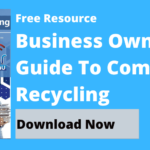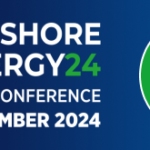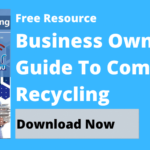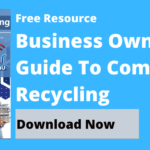Solving ‘Ghost Nets’ Problem Of Australia 
Energy Disrupter
Ghost Nets Australia 
Even just once in your life, I guarantee that you have seen an article or even just a social media post that mentions the plastic problem we have in our oceans and seas. This is a good thing, though, as it makes us aware of the adverse effects plastic has on our bodies of water and the marine life that lives and thrives in it.
>>Download Now: Free PDF Business Owners Guide To General Waste Bin Services
Although Australia has done and continues to do plenty to clean our oceans and beaches, even drastically decreasing plastic pollution in Aussie beaches, the problem still looms and continues to pester our marine life to this day.
One alarming problem we have today is ghost nets. What are ghost nets? How do they harm our oceans, seas and marine life? And more importantly, how is Australia dealing with the ghost nets problem? Let’s cover that more below.
The ghost net problem in Australia
Before we move on to the ghost net problem we have in Australia, you may wonder what ghost nets actually are.
Ghost nets are abandoned, lost, or discarded fishing nets that end up drifting in the oceans and seas. These nets can pose significant environmental and ecological threats. They continue to trap marine life, such as fish, turtles, seabirds, and marine mammals, even after they have been abandoned by fishermen.
The term “ghost” refers to the fact that these nets are often difficult to see and can silently float through the water, causing harm to marine ecosystems.
Ghost nets are a major contributor to the problem of marine debris and can have several negative impacts:
- Wildlife Entanglement: Animals usually entangled themselves in these nets, leading to injury, suffocation or even death. This ongoing issue should deeply concern us, especially for species like sea turtles, which often find themselves in ghost nets.
- Damage to Coral Reefs: Ghost nets can damage fragile coral reefs when they latch onto them, breaking or smothering coral colonies.
- Continued Fishing: Ghost nets also continue to capture fish and other marine organisms, even if fishermen no longer actively tend them. This can lead to overfishing and disruptions in local ecosystems.
- Marine Pollution: Over time, these nets break down into smaller fragments, contributing to the problem of microplastic pollution in the ocean.
Efforts are being made by Australia’s governments, environmental bodies and fishing industries to address the issue of ghost nets. These efforts include the removal of abandoned nets from the oceans, recycling or repurposing the recovered materials and raising awareness about responsible fishing practices to prevent the abandonment of nets in the first place.
What efforts have Australia made to deal with ghost nets? Let’s discuss this below.
Australia’s solution for the ghost net problem
As already mentioned above, Australia continues to do everything it can to address the ghost net problem. CSIRO teamed up with Parks Australia and produced a report on Recycling pathways for ghost nets and other marine debris in Northern Australia. It considers the different factors that affect the viability of recycling ghost nets in the region.
The abandoned, lost, and discarded fishing nets, known as “ghost nets,” pose a significant environmental threat, particularly in the Gulf of Carpentaria in Northern Australia. These nets can entangle wildlife and harm marine and coastal ecosystems, with many of them arriving from overseas.
To combat this plastic pollution issue, a report on recycling pathways for ghost nets and marine debris in Northern Australia has been produced in collaboration with Parks Australia.
The report suggests establishing a central pre-processing hub to sort, clean, shred and convert ghost nets and marine debris into pellets, which can then be used by polymer re-processors to create new products.
This approach aims to streamline the collection and processing of ghost nets, potentially leading to the establishment of a recycling industry in Far Northern Queensland and the Northern Territory, fostering a circular economy and supporting community development and education.
However, several factors need consideration for a successful recycling approach, including the cost, pre-treatment requirements, volume of material, utilities, technology complexity and maintenance. Local consultation has been a focus, addressing the practicality of recycling ghost nets in remote areas.
Parks Australia is currently reviewing the report’s recommendations as part of its Ghost Nets Initiative, which provides significant funding to address the ghost net problem in northern Australia. Additionally, they are supporting projects testing marine debris pre-processing equipment in various Gulf of Carpentaria locations, further contributing to awareness and solutions for this issue.
Waster’s final thoughts
The sad reality: ghost nets, abandoned fishing nets drifting silently in Australia’s seas, continue to harm marine life and ecosystems. However, at the very least, a promising solution has emerged from a collaboration between the Commonwealth Scientific and Industrial Research Organisation (CSIRO) and Parks Australia.
Ghost nets entangle marine life, damage habitats, cause overfishing, and contribute to pollution. So, Australia has been actively addressing this issue with cleanup initiatives and awareness campaigns.
In addition, the proposed solution centres on a central hub in Northern Australia for processing ghost nets, efficiently turning them into recyclable pellets. This could establish a local recycling industry, though cost and technology complexities need attention.
Parks Australia’s review of the report aligns with its Ghost Nets Initiative, advancing efforts to combat this problem and increase awareness. Australia’s commitment to fighting plastic pollution and safeguarding marine ecosystems in the region is evident in this collaboration.
Contact Waster right now for your waste and recycling needs now!
Does your Australian-based business need waste and recycling services? If so, then you have come to the right website!
Please call 1300 WASTER (1300 927 837). You can also email us at [email protected] or [email protected] if you have further questions. Find the best deals in terms of waste and recycling pricing and services!














 Waster Answers!
Waster Answers!

 : What Can Small Businesses Expect To Pay?
: What Can Small Businesses Expect To Pay?






